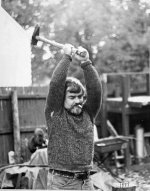kbb
Well-known
Except for occasionally playing around with a tele lens, I'm an 'everything In focus' documentary photographer.
You'd think that APS-C would be fine for that kind of work, but, alas...What I'm seeing is that on APS-C, photos shot at f/11 and f/16 (remember, I like everything in focus to the greatest extent possible) are more likely to suffer apparent image degradation from diffraction effects than with 24x36.
I don't want it to be true, but that's what I'm seeing.
You'd think that APS-C would be fine for that kind of work, but, alas...What I'm seeing is that on APS-C, photos shot at f/11 and f/16 (remember, I like everything in focus to the greatest extent possible) are more likely to suffer apparent image degradation from diffraction effects than with 24x36.
I don't want it to be true, but that's what I'm seeing.


